
Mazda CX-5 Estate (2012-2017) review
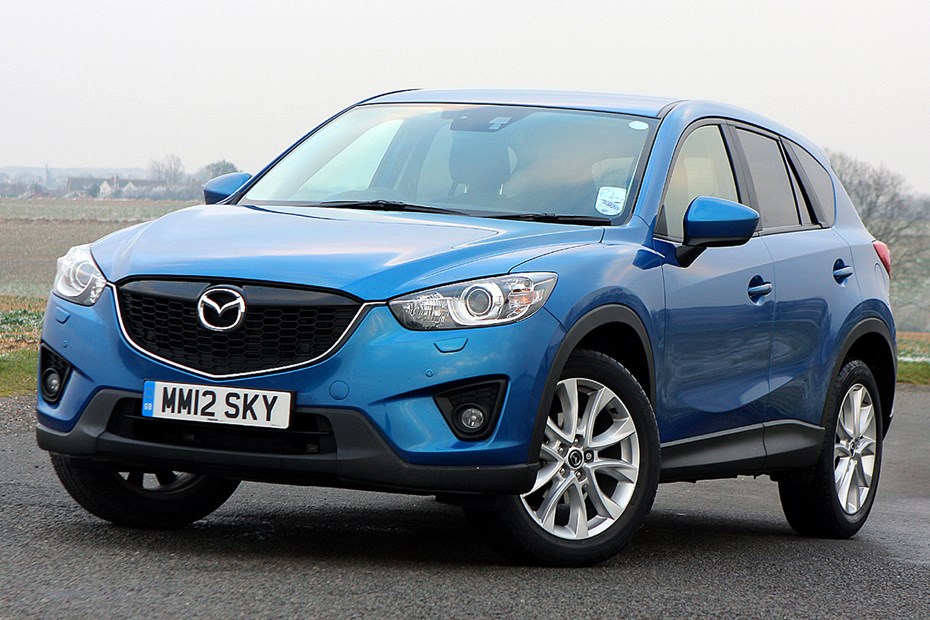
At a glance
| Price new | £22,165 - £31,095 |
|---|---|
| Used prices | £1,554 - £10,029 |
| Road tax cost | £35 - £215 |
| Insurance group | 15 - 21 |
Get an insurance quote with

|
|
| Fuel economy | Not tested to latest standards |
| Range | 579 - 751 miles |
| Number of doors | 5 |
| View full specs for a specific version | |
Available fuel types
Petrol
Diesel
Pros & cons
- Excellent performance
- Euro 6 diesels
- Smooth ride
- Interior doesn't feel quite as premium as some competitors
- Noisy petrol engine
- Slow automatic gearbox
Mazda CX-5 (12-17) rivals
Overview
The 2012-2017 Mazda CX-5 is a medium-sized SUV that’s worth seeking out if you want a versatile and family-friendly used car. Launched in 2012, it was a significant car for Mazda as it was the first new model developed after the firms’ partnership with Ford ended. It introduced a new platform to the market, called SKYACTIV.
In addition to ensuring greater differentiation between Mazda’s offering in a competitive market, and potential rivals that had previously shared platforms with Mazda such as the Volvo V40 Cross Country, XC60 Mk1, and the Ford Kuga, it means this 2012 car is a surprisingly modern option for used buyers.
After all, SKYACTIVE provides the foundation for Mazda’s current range – and that clean-sheet approach means it’s well ahead of rivals in terms of emissions as well. Every diesel CX-5 should be compliant with ULEZ or clean air zones, as the new 2.2-litre diesel met Euro 6 from launch.
Competitively priced new, next to some premium rivals a used Mazda CX-5 can feel rather less luxurious inside. Build quality and engineering is generally good though, and given the reputation of contemporary diesels a little bit of extra reliability goes further than an extra bit of leather-texture or chrome trim.
Of course, with the oldest models having endured well over a decade of British roads and weather, a few problems have cropped up. Here’s the Parkers guide to getting the best second hand Mazda CX-5.
Used Mazda CX-5 (2012-17) buying guide
The Mazda CX-5 makes a good case for itself as an alternative to a Ford Kuga, Audi Q5, Honda CR-V or Nissan Qashqai, and it has a very different character and feel to most contemporary rivals. It’s not particularly clever in terms of interior space or passenger features, but it is engaging and involving to drive with a sporty feel and ample performance.
Four-wheel drive models are readily available on the second hand market, and you’ll find it quite easy to get one with an automatic gearbox as well. Equipment across the range is generous, though Sport Nav is worth seeking out now that used prices are low enough to make top of the range affordable.
There are two engines to choose from. The 2.2-litre diesel was popular when new, and if you like to save money CX-5 VED rates start in band C for the front-wheel drive version. Petrol, AWD and automatic models are in bands E or F, so still tolerable for road tax. We’d still favour the diesel for most purposes, though the petrol model is likely to reach higher mileages without major issues.
2015 facelift models have upgraded interiors with a larger infotainment screen, LED lighting, adaptive headlights on Sport Nav models and general improvements in fit and finish, including revised suspension and an electronic handbrake that make it a little nicer to drive when towing. They’re also the best equipped and our recommendation would be a CX-5 2.2d Sport Nav AWD if you want a versatile used family car, and a 2.2d SE-L if you want low running costs.
2012-17 Mazda CX-5 known faults and common problems
1. Diesel in the engine oil – 2.2d
Mazda’s 2.2-litre engine meets Euro 6 ahead of many rivals because it’s got a lot of the technology found in the latest ‘clean’ diesel engines. Not all of it is perfect – for example, the diesel particulate filter cannot finish regenerating if the driver switches the car off in the middle of the process.
This causes unburned diesel to reach the engine oil, diluting it. Ignored this can cause catastrophic failure, but it’s mitigated by frequent servicing and plenty of long, fast motorway drives.
Check the dipstick with the car parked on level ground, and don’t just look at the level and condition of the oil – sniff for diesel fumes. If the level is above the full line, then there’s likely to be a problem somewhere you’re not being told about. If the oil has reached the third, X mark on the dipstick, the car should be avoided.
2. Diesel particulate filters – replacement
Cars which have been driven for short trips (less than 10 minutes between start and stop), at low speeds, or left idling for long periods such as former taxis may end up with a blocked or full diesel particulate filter. The car should pop up messages to warn the driver that the car needs a long, high-speed run, or maintenance.
The first warning should be remedied with a simple drive of at least 20 minutes after the car’s reached operating temperature, and over 20mph sustained – such as 20 minutes of dual carriageway or clear motorway. The second warning means it will need to go to a dealer.
If that’s ignored, the DPF will restrict exhaust flow, the car will go into limp-home mode, and you’ll be shopping for a new particulate filter.
3. Accident and theft damage – all models
The Mazda CX-5’s catalytic converter is among the group targeted by thieves during periods of high scrap metal values. Cat theft from cars and SUVs with high ground clearance, particularly Japanese models, became something of a ‘smash and grab’ style operation so check the sills and trim for crush damage and evidence of replacement paint, and look at the floor of the car for scrape marks and gouges from angle grinders. Often a whole new exhaust would be required, and wires would be cut, so tell-tale joins in the wiring loom to the sensors are also a sign the car has been targeted.
While insurance repairs should make the car good, spliced wiring introduces another failure point for engine management, and damaged underbody paint and coatings means an extra risk of corrosion that wouldn’t necessarily be covered by Mazda’s warranty.
This is also a good time to check for accident and flood damage such as missing or damaged undertrays and wheel arch liners.
4. Service history – online records
Many used Mazda CX-5s will have very little paperwork with them. This is because Mazda adopted digital service records relatively early, though dealers do still provide receipts and invoices for work carried out. The 2.2 diesel can request oil changes as often as 6,500 mile intervals due to the oil quality monitor and risk of diesel diluting the engine’s lubrication.
Ideally you want a car that has paperwork though, because some aspects of the service still need to be stamped up and not all dealers include them particularly if the car is on a pre-paid service package. The crucial stamp is for the body inspection, which keeps the Mazda anti-perforation warranty valid for the full 12 years. Paintwork is only covered for three years.
Manual gearbox oil should be replaced at 112,500 miles and on AWD models the transaxle and differential oil should be changed if the vehicle has been driven in floods. There’s no fixed interval for automatic gearbox fluid changes but as a rule 40-60,000 miles or five years is a safe assumption with modern systems.
5. 2.0-litre petrol (SKYACTIV-G)
The 164hp petrol CX-5 is not particularly common in the UK, but it’s a good choice if you want a petrol SUV. The engine has not shown any specific weaknesses, though it’s naturally a little thirsty compared with the diesel. Timing chains appear to be long-lived, but listen for rattles on startup on higher mileage examples in case neglect has caused damage.
6. Carbon build up – petrol and diesel models
Early diesel models were recalled in 2019 for carbon build up on the intake shutter valve (swirl flaps, if you want to compare possible issues with rival cars). You can check online to see if a car has been recalled, and it’s also flagged when you check the MOT history online.
On all models the issue of carbon build up on the intake and valves (this is not the same as old-fashioned ‘decoke’ carbon inside the engine) can cause poor running, loss of power and reduced fuel economy on higher-mileage models. A process called walnut blasting has taken off as a means of removing these deposits without having to strip the engine too much, and could be a worthwhile investment on cars with over 75,000 miles. For the best results find a Mazda specialist rather than a generic garage that may not be familiar with all the connectors and gaskets involved.
7. Bodywork, corrosion and paint problems
It’s easy to assume modern cars will be free of rust until they’re 15 years old, so Mazda’s thin steel and relatively sparse rustproofing to save weight can sometimes catch owners out. Typical issues are bubbling paint near window edges and handles, which can lead to rusting through. This would be covered by the bodywork warranty on most CX-5s if they have had the annual body inspection as part of the service history.
Some colours are very prone to stone chip damage due to the pigments used. Red CX-5s may have white specs of primer and gravel rash, or show fine scratches more easily than other colours.
One batch of CX-5s also displayed a tendency to crack windscreens. If a new one has been fitted check the paint around the pillars and edges, and the trim to the inside of the windscreen – though most windscreen replacement firms are highly skilled at installing new glass without damage.
8. Four-wheel drive system maintenance
The CX-5 uses an electronically controlled multi-plate clutch viscous coupling to control how much torque is sent to the rear wheels, and it is never fully disengaged in this generation of AWD. It also relies on more sensor information than many similar systems, including brake fluid temperature and if the windscreen wipers are in use.
As well as the requirement for changing the transfer and differential oils after driving in floods, it’s important to have closely-matched tyres. This isn’t just for safety – different wheel diameter places uneven load on the AWD system when all four wheels have traction. Look for tyres replaced as matching brands on the same axle as a minimum, and if you’re looking at a car and it has one new tyre and three very worn ones, budget to replace the other three. Or move on to the next CX-5 on your list.
9. Manual gearbox – clutch and flywheel
The Mazda CX-5 with manual transmission is not prone to any specific issues, but on higher mileage cars or ones that have been used for towing feel for juddering and clutch slip (by placing the car in a high gear on a hill), and listen for rumbles or clonks that can indicate failure of the dual-mass flywheel.
This is particularly important on the 175hp 2.2d, which has a lot of torque and an all-wheel drive system without the smoothing effect of an automatic gearbox. The 2.2-litre diesel can tow up to 2,000kg.
Vibration when driving at a constant speed can also indicate problems with the flywheel, but on AWD models it may also point to worn bushes or damage elsewhere in the transmission.
10. i-Stop and batteries
Part of the CX-5’s emissions-control armoury is the fitment of a stop-start system called i-Stop. It relies on a substantial battery in good condition to work correctly, and is unusual in that can display whether the system is in use on the central display, with factors that affect it such as vehicle electrical load.
Aftermarket accessories – including badly-wired towing electrics – can confuse the system causing it to fail to restart the engine due to lack of power. Make sure any non-standard features have been correctly installed via the fusebox.
What’s a used Mazda CX-5 like to live with?
Over the next few pages, we’ll review each aspect of the 2012-2017 Mazda CX-5, taking into account its practicality, comfort, fuel economy and performance. If you’re short on time, you can also skip to our verdict page to see if we recommend buying a used Mazda CX-5.





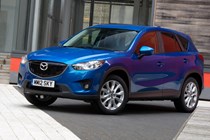
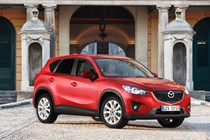
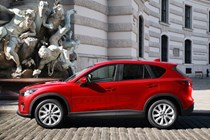
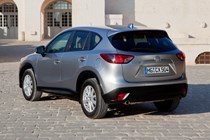
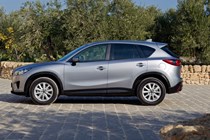
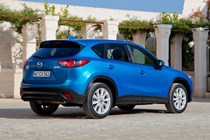
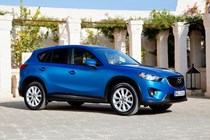
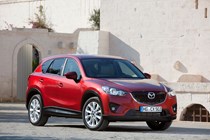
.jpg)
.jpg)
.jpg)
.jpg)
.jpg)
.jpg)
.jpg)
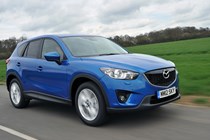
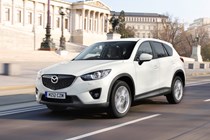
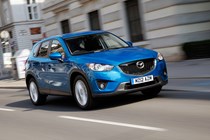
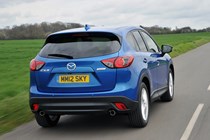


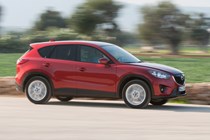
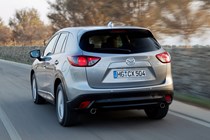
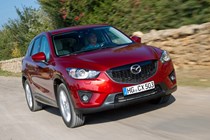
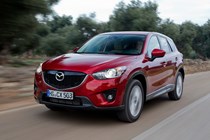
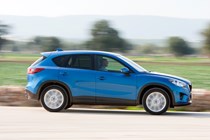
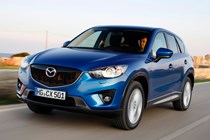
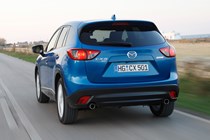
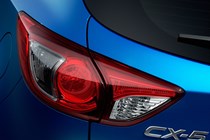
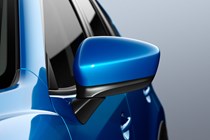
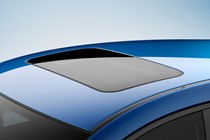
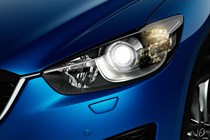
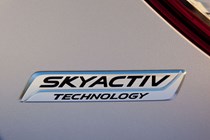
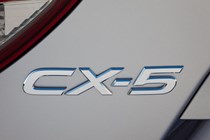
.jpg)
.jpg)
.jpg)
.jpg)
.jpg)
.jpg)
.jpg)
.jpg)
.jpg)
.jpg)
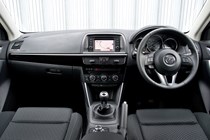
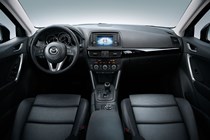
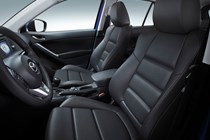
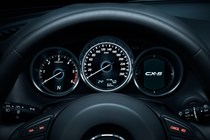
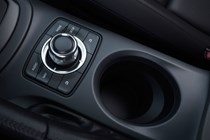
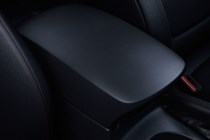
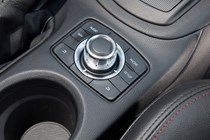
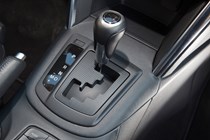
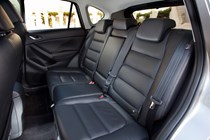
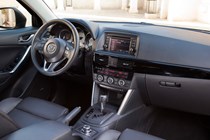
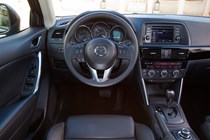
.jpg)
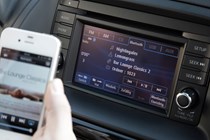
.jpg)
.jpg)
.jpg)
.jpg)
.jpg)
.jpg)
.jpg)
.jpg)
.jpg)
.jpg)
.jpg)
.jpg)
.jpg)
.jpg)
.jpg)
.jpg)
.jpg)
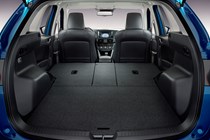
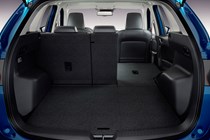
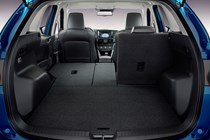
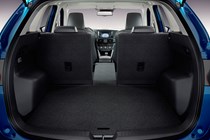
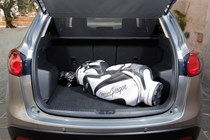

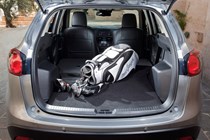
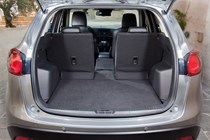
.jpg)
.jpg)
.jpg)
.jpg)
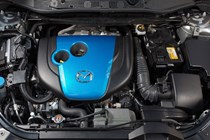
.jpg)
.jpg)
.jpg)
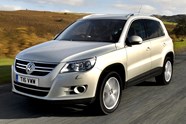
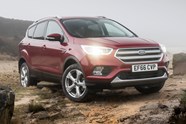












.jpg?quality=50)
.jpg?quality=50)
.jpg?quality=50)
.jpg?quality=50)
.jpg?quality=50)
.jpg?quality=50)
.jpg?quality=50)



















.jpg?quality=50)
.jpg?quality=50)
.jpg?quality=50)
.jpg?quality=50)
.jpg?quality=50)
.jpg?quality=50)
.jpg?quality=50)
.jpg?quality=50)
.jpg?quality=50)
.jpg?quality=50)











.jpg?quality=50)

.jpg?quality=50)
.jpg?quality=50)
.jpg?quality=50)
.jpg?quality=50)
.jpg?quality=50)
.jpg?quality=50)
.jpg?quality=50)
.jpg?quality=50)
.jpg?quality=50)
.jpg?quality=50)
.jpg?quality=50)
.jpg?quality=50)
.jpg?quality=50)
.jpg?quality=50)
.jpg?quality=50)
.jpg?quality=50)
.jpg?quality=50)








.jpg?quality=50)
.jpg?quality=50)
.jpg?quality=50)
.jpg?quality=50)

.jpg?quality=50)
.jpg?quality=50)
.jpg?quality=50)